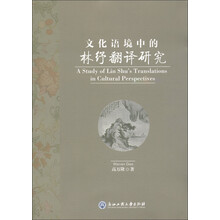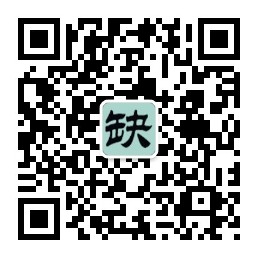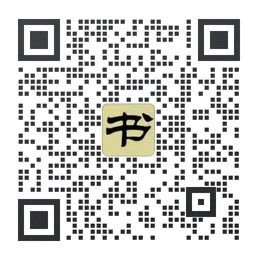文化语境中的林纾翻译研究
作者:高万隆 (作者)
出版:浙江工商大学出版社 2012.10
页数:259
定价:45.00 元
ISBN-13:9787811406290
ISBN-10:7811406292
去豆瓣看看 Chapter 1 Introduction
1.1 Lin Shu: A Controversial Figure in Chinese Translation History
1.2 Significance of the Research on Lin Shu
1.2.1 Need for Reevaluation of Lin Shu’s Translations
1.2.2 Lin Shu, Father of China’s Modern Literary Translation
1.2.3 Influence of Lin Shu’s Translations
1.3 Theoretical and Empirical Contribution of the Study to Translation Studies
1.4 Structure of the Work
Chapter 2 Lin Shu’s Works Within a Target-oriented/Culture-oriented Framework
2.1 Target-oriented/Culture-oriented Translation Theories
2.1.1 Toury’s Target-oriented Translation Theory
2.1.1.1 Translators’ Main Goals
2.1.1.2 The Role and Function of Translation
2.1.1.3 Translation Strategies
2.1.2 Culture-oriented Translation Studies
2.1.3 Readers’ Response and Reception Theory
2.2 Cultural Translation Studies in China
2.2.1 Target-oriented/Culture-oriented Translation Approach
2.2.2 Contextual Analysis
2.2.3 Textual Analysis
Chapter 3 Critical Literature Review on Lin Shu
3.1 Chinese Criticism
3.1.1 Affirmation by Lin Shu’s Contemporaries
3.1.2 Condemnation During the May Fourth New Culture Movement
3.1.3 Assessment After Lin Shu‘s Death
3.1.3.1 General Reviews
3.1.3.2 Zheng Zhenduo’s “Mr Lin Qinnan”
3.1.3.3 Han Guang’s “Lin Qinnan”
3.1.4 Negative Criticism from 1949 to 1979
3.1.5 Revival:1980s Onwards
3.1.5.1 Qian Zhongshu’s “Lin Shu’s Translations”
3.1.5.2 New Critical Interest
3.2 Western Criticism
3.3 Key Issues in Dispute Concerning the Assessment of Lin Shu
3.3.1 Lin Shu’s Thought: Conservative or Reformist?
3.3.2 A Pioneer or an Opponent of Modern Chinese Culture?
Chapter 4 Lin Shu in Cultural Context
4.1 Lin Shu’s Translations in the Cultural Context
4.1.1 Lin Shu’s Choice and Response
4.1.1.1 In Search of Similarities
4.1.1.2 Literary Subject Matters
4.1.1.3 Literary Genres
4.1.1.4 Literary Style and Technique
4.1.2 Output of Lin Shu’s Translations
4.1.3 Lin Shu’s Translation Practice
4.1.3.1 Joint Translation
4.1.3.2 Paraphrase or Free Translation
4.2 Case Study:Bali Chahuanu Yishi——Transfiguring Chinese Fiction
4.2.1 Ideological Content
4.2.2 Characterization
4.2.3 Literary Form
Chapter 5 Poetic Equivalence
Chapter 6 Beyond Equivalence
Chapter 7 An Exemplar of Chinese Literary Translation
Bibliography
Glossary
List of Lin Shu’s Translated Works
高万隆,浙江工商大学人文与传播学院院长、教授、博士。曾在英国、澳大利亚和新西兰留学和工作多年。先后在山东师范大学、英国爱丁堡大学、澳大利亚格里菲斯大学、台州学院和浙江工商大学任教,教授外国文学、比较文学、汉英翻译等课程。主要从事外国文学和文学翻译研究。在国内外报刊发表大量论文、散文、诗歌、小说等。有《婚恋·女权·小说》、《艾米利·勃朗特研究》、A Handbook of Chinese Cultural Terms等著作。现任浙江省比较文学与外国文学学会理事,新西兰内务部、新西兰交通部、新西兰翻译家协会资格翻译,新西兰作家协会会员。
This book is one of the research results of Humanities and Social Science Projects of the Ministry of Education, China. It focuses on Lin Shu's translations in the cultural context of China. An investigation of Lin Shu's translation activities in the special cultural context will contribute to our right understanding of their significance and contributions. The target-oriented translation theory, the culture-oriented translation theory and the reader's reception criticism are used to elucidate Lin Shu's translation phenomenon. First, Lin Shu's choice of and response to the source texts are based on the target culture, and he searches the similarities between the source and target texts in the subject matter, content and style rather than the linguistic form* Through reviewing his writings and inspecting his choice and response to the original, the relations between I,in Shu's translations and his trans-cultural context can be detected. Second, Lin Shu's high translation output, in which none of the Chinese translators has outstripped Lin Shu, exhibits Lin Shu as "China's first and most prolific translator of Western novels" as well as his key role in the introduction of Western culture during the transition of Chinese culture from traditional to modern. Lin Shu's translation output has really shifted the modern Chinese intellectuals' interest and attention to Western culture, thus impelling the transformation of Chinese culture toward modernity. Therefore, the contribution of Lin Shu as a pioneer of cross-cultural translation in China should not be underrated. Third, his translation practice that features joint translation and free translation or paraphrase is a readily acceptable translation in view of the cultural context of the time. His translation practice is also based on the need of the target culture rather than linguistic equivalence; therefore it is unadvisable and unfair to negate and obliterate it.
比价列表

 缺书网
缺书网 扫码进群
扫码进群




